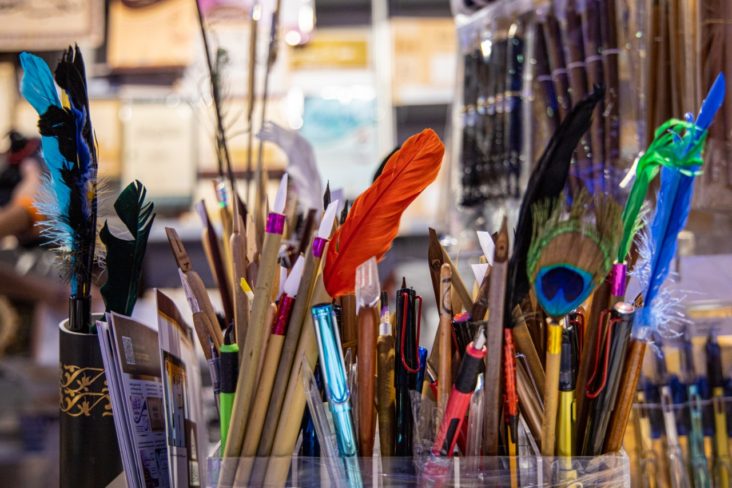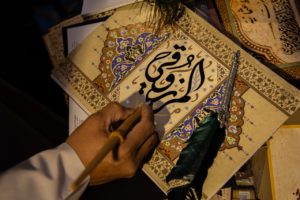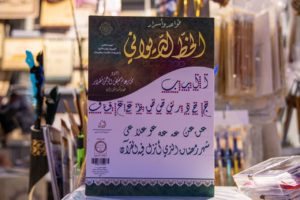Stroke-By-stroke Workbooks And Guides Available At SIBF 2020 Will Initiate Beginners To The Grace And Elegance Of Arabic Calligraphy

Arabic calligrapher Hussain Ahmed Alssiri is at the 39th Sharjah International Book Fair with one mission – to draw both youngsters and adults to experience for themselves the joy of learning an art form perfected over centuries by great masters of yesteryears.
Famed for its unparalleled aesthetic beauty, the delicate swirls and curves of this fine art form lend it a distinctive grace and elegance, and mastering the art form is a great way to explore one’s true artistic capabilities, said the Kuwait-based Founding Director of Alssir Art whose E25 stand is located in Hall 04 at Expo Centre Sharjah.
Alssir Art houses every tool required for both beginners and practitioners of the revered art form. Several varieties of reed and bamboo pens including the traditional style feather pens, metal pens and nibs, special inks, burnished and ornamented practice papers, and a host of practice books to improve skills of handwriting in each font or style can be found here.
Arabic has one of the most sophisticated and diverse calligraphic systems in the world and was originally written using a traditional pen made of reed. To enable beginners gain mastery of the various styles of calligraphy, Ahmed Alssiri has designed and published a series of practice books that help perfect the precise rules and dimensions required for each letter.
Beginners are advised to use regular pens to practice the craft and the specially designed books also teach how to merge each letter with the next one, eventually leading the learner to create a work of art. It is only after gaining an understanding of the rules of geometry involved in the writing of each letter that learners are advised to move on to specially designed pens and ink.
The smooth surface of the practice book facilitates erasing, making it highly suitable for calligraphy learners. The books are available in lined and grid versions and feature silver or golden ornamented edges. The easy-to-follow guide teaches children the shapes of Arabic letters and helps them recognise the different patterns of each of the styles. Colours and brushes can be bought separately.
“Arabic calligraphy is composed of six major cursive scripts of which the earliest type is the Kufic style which can be recognised by their sharper edges and corners,” he explained. “Naskh and Reqaa are what we call standard calligraphy and are taught as part of the curriculum in most schools. Thuluth, Farsi, and Diwani are among the other main styles practiced today. For each style, the tip of the reed pen is cut differently.”
The stroke-by-stroke workbooks make it possible for anyone to experience and enjoy the beauty of Arabic calligraphy, he added. “I am a graphic artist as well and the different forms and shapes of writing Arabic calligraphy can be applied to different contexts, including logo and web design, for instance.”



